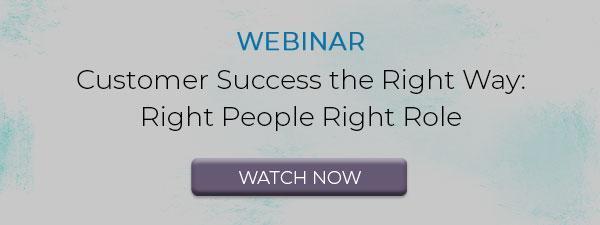Customer Success Management: Inside a Noisy Market
How do you create happy customers in a noisy market?
Ensuring happy customers, also known more formally as “customer success management.” It’s becoming increasingly important to businesses who want to demonstrate their value to buyers as a means of keeping customers.
As organizations add customer success management roles and hire staff, they often struggle to differentiate success responsibilities from those of sales and service roles. And the result—tension between teams, dropped balls, and missed opportunities. This lack of clarity can also cause companies to make the mistake of thinking sales, success, and service talent are interchangeable—placing the right talent into the wrong roles.
Customers have more agency than ever before.
Buyers have more power today than they’ve ever had. And this is true whether you’re selling B2B or B2C. Consumers have more choices about how, where, and from who they buy than ever before.
74% of all customers would choose to buy from Amazon if given a choice.
The duration of the relationship between a business and the customer has a greater impact on the company’s health than ever before so it’s crucial to get this relationship right. Begin to think about how to proactively engage with their customers across the life cycle of that relationship and have them realize the business value from their application regardless of what the application is.
Creating happy customers isn’t new. It’s grown over time to be about creating value for the customer over time. What’s interesting about this is that the expertise now has a premium into delighting customers that it never had before.
Customer success, customer service, and customer management have been used interchangeably, and this is incorrect. And this is challenging.
There are 4 steps to doing customer success management well:
- Document your customer engagement strategy.
We probably have all had customer engagement strategies in our past but to stand out in today’s crowded market, your strategy will be different than it had been. - Focus on the right processes for engagement.
Here, you’ll focus on following the right process for each type of customer engagement. - Gather the right data to drive conversations
We look at data differently today, and once you know what data to collect, this will determine your strategy. Now, for the first time, talent analytics are being used to collect data and bring to light these critical challenges for decision makers. - Organize your talent and hire for success
This is where we have the most leverage today. Regardless of your company’s size, and you take a step back, ask what’s the core purpose of the customer success role?
Depending on the size, industry, and the goals of your organization, the purpose of the customer success role could vary:
- Making sure customers use or adopt the product or service
- Cross-selling or up-selling
- Customer retention
- Respond to and satisfy customer questions and complaints
If you can isolate how you’re looking at the core purpose of the customer success role, and get really clear, you can begin to think about how you’ll organize the department for maximum success.
Know that all customer success roles will differ. One of the biggest challenges we see with our clients is that they find they’re frustrated with overlap, double quotas, and people dropping balls. And it all happens because the roles weren’t clearly defined.
We recommend starting with developing a solid understanding of what makes your customers happy. Expertise becomes a premium as you engage with your customers. A great starting point is to explore how you build value for your customers at each stage along the customer journey.
And this can be a spot where it can be easy to fall into the trap of relying on opinions. And instead, we work with clients to focus on the parts of the customer success function that can be measured, and what numbers will grow your business.
If your business is working to understand what makes your customers happy and then taking that knowledge to help you build out your customer success management team, get in touch! We partner with clients to help them identify and find the right people for the right customer success roles.



